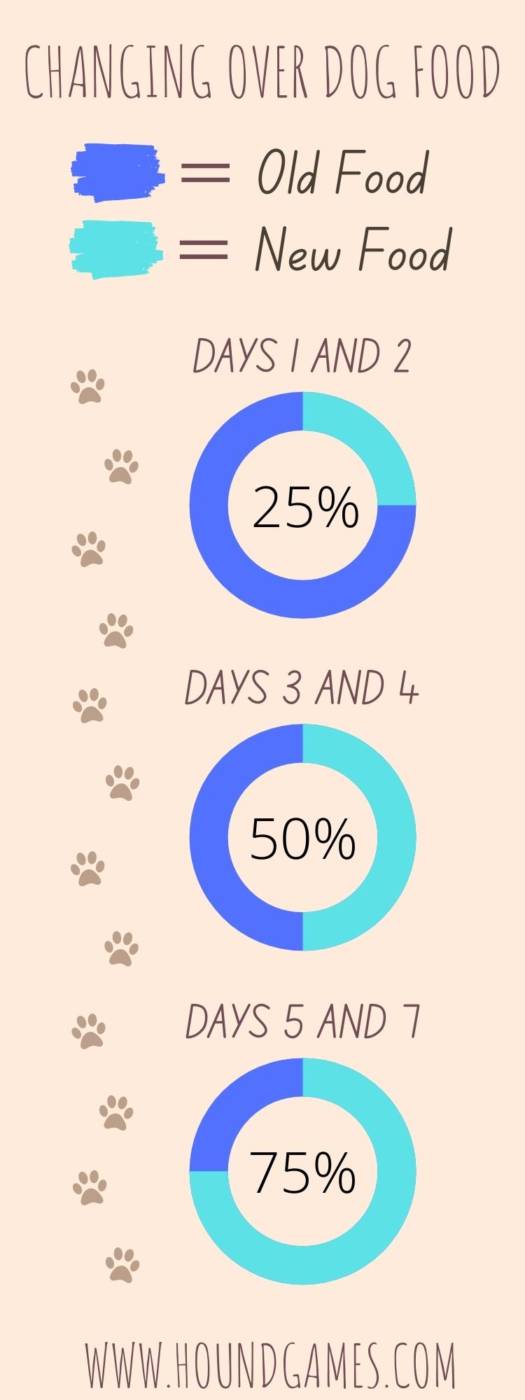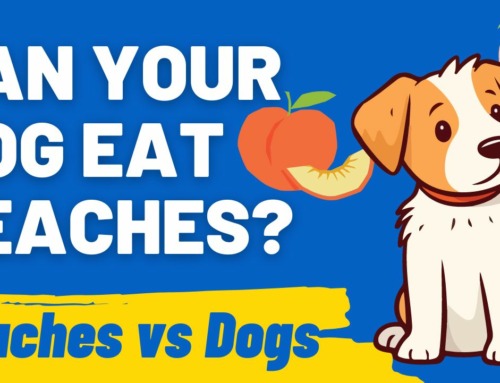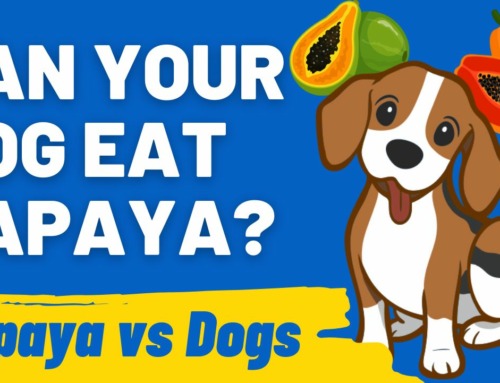When picking out dog food, most people pay close attention to its nutritional value. Unfortunately, that means they tend to forget about the taste and whether flavors play a part, and what you should do when it comes to changing or choosing flavors.
In truth the flavor of your dog’s food can make a huge difference to your pet, whether it’s changing flavors of the same dog food brand, choosing a new flavor, mixing flavors, when to change flavors, and well, you get the point. Let’s start at the top…
Why Do Dog Food Brands Make Different Flavors?

After taking a short stroll down the dog food aisle, you may wonder why there are so many flavors.
The simple answer is that canines have different needs depending on their size and breed. So, brands will create a collection of special mixes that can cater to a wide array of dogs. Some of the options will have more protein, which is excellent for development, or some will have higher fiber, for example.
These considerations are especially crucial when you’re raising a puppy. And we have this guide if you’re struggling to choose the right food for your puppy: Best Dry Puppy Food: Small, Medium, Large Breeds (New 2023)
Other than that, a few mixes have a higher concentration of carbohydrates. These will provide an extra boost of energy for active dogs.
Some dog food brands will also take medical conditions into account, because some canines have an issue digesting certain ingredients.
Can I Switch Flavors of the Same Dog Food?
As humans, we can switch out our meals on a daily basis. In fact, we rely on variety to help keep our digestive system healthy and in tip-top shape.
This isn’t the case for most dogs. To help you better understand this, let’s take a look at how canines approach their food.
There are three main aspects of a meal. These are flavor, visual cues, and, of course, scent!
Most of the time, a dog will begin their meal by first smelling the food. If it’s not the aroma they’re used to, or is undesirable in anyway, then they’ll simply stay away from the meal.
They may revisit it and recognize the grub is safe to eat. This is why it’s always best to introduce a new flavor slowly, or at least a mix of their new and old flavor.
You can use this chart to determine how to transfer foods over for your dog. This is usually used for changing brands, however if the ingredients are substantially different, or your dog is unsure about the new flavor, then this is a good way to go about the change.

Do Dogs Get Tired of the Same Flavor Food?
To make answering this question a little easier, let’s break down the food into its major parts.

Smell
As most people know, dogs rely heavily on their sense of smell to interact with the world. When your dog recognizes that the food is safe to eat, they’ll remember the aroma for next time.
After some time, your dog may grow bored of the scent and indeed their food. You may wish to read our post Do Dogs Get Bored of Their Food? Answered!
They’ll likely keep eating the food, but you’ll notice that they no longer run toward the bowl when you lay it out.
Flavor
Dogs have fewer taste buds than humans do. For that reason, dogs can’t pick up on as many flavors as we do.
They can, however, identify salty, sweet, sour, and bitter profiles. Their stronger sense of smell likely makes up for fewer taste buds, and their shorter memory probably helps them to enjoy one flavor for longer.
Aside from that, dogs have a taste receptor that can pick up on the moisture in food. That means they’re more likely to care about the water content than the flavor – which is why adding some water to kibble can help increase the desirability of a meal.
Texture
One of the key aspects of any meal is texture. We rely on the variation between crunchy and soft foods to keep the food interesting.
The same concept applies to dogs. Canines like to bite down on a variety of textures to stimulate their palates. For that reason, your dog may be more likely to lose interest in the feel of the food rather than the flavor.
If your dog just doesn’t eat from their bowl, then you should read our post, Dog Won’t Eat Out of Bowl: What to do
Does Flavor Matter for Dog Food?
After breaking down the aspects of food, you can clearly see that dogs care about flavor. However, dogs are more likely to be concerned with other factors. Dogs will pay more attention to the texture, scent, and water content, rather than the flavor itself.
As you can’t change these three aspects without affecting the taste. So, the overall flavor will play a major role in your dog’s eating habits.
What Is the Flavor Rule for Dog Food?
The flavor rules are a set of guidelines that dog food brands have to follow. These include:
- Products must contain a sufficient detectable amount of any listed ingredients.
- Specific ingredient percentages aren’t required on the label.
- All products have to be clearly labeled to match their contents.
For the first rule, dog food companies will need to test their meals using trained canines. This ensures that the food lives up to its claims.
Brands don’t need to specify the ratios in their recipe. Although, there are minimum requirements.
For instance, if an ingredient is on the label, it must make up at least 25% of the product. In addition, it can’t exceed 95% of the whole meal.
Finally, there are rules about what the label looks like. All the information on the packaging should be straightforward and easy to read.
So if a meal advertises that it’s “beef flavored”, both words need to be present in the same way. That means they’ll have identical fonts and colors on the packaging.
Doing so will make it easier for pet owners to pick up a product off the shelf.
Are you interested in reading our post, Can Dogs Have Store-Bought Chicken Broth?
Can I Mix Different Flavors of Dog Food?

Dogs need a balanced diet to stay healthy. That means they require a mix of proteins, carbohydrates, and fats to function.
Most of the time, dog food mixes will contain everything your pet needs throughout the day. Although this isn’t always the case.
Sometimes it’s difficult to stuff all the necessary nutrients into one meal. So chances are the mix you choose may have a missing element.
If that’s the case, then mixing different flavors is an excellent way to ensure your dog stays healthy. If you’re wondering about how much you should feed your dog then be sure to check out our dog feeding calculator and feeding guide.
Mixing flavors can expose them to a variety of proteins and vitamins that may not otherwise be present in one flavor alone. Not only is this good for the digestive system, but it’ll also give your pup an energy boost.
In addition, mixing meals will help dogs get used to new flavors and aromas. This can make transitioning your dog to a fresh mix much easier.
Ideally, it’s best to mix flavors from the same brand. However, you can get away with combining two different varieties if your dog tolerates the mix well.
If your dog has diarrhea after eating then you’ve likely either changed flavors too quickly, or there is an ingredient that doesn’t agree with your dog.
How Often Should You Change the Flavor of Dog Food?
The answer to this question will depend on your dog. Typically, puppies will not need many flavor changes as they’re growing up.
However, after their first birthday, you may notice that they become a little pickier with what they eat. This is when you can start switching out their meals.
As a general rule of thumb, it’s good practice to change the flavors of dog food every three months. That will give your canine enough time to get used to the meal and get the most out of it.
You can change the mix more often, but then you risk the pup rejecting the food. So, be sure to give your pet a chance to get bored with the meal before you take it away.
How to Pick Out the Best Food for Your Dog
To make sure you choose the best mix for your pet, you may want to stop by the vet. The veterinarian should be able to tell you if your dog has any allergies or food restrictions.
This will help you create an eating schedule and pick a flavor that suits your pup.
Some of the best dog food brands out there include:
- Wellness
- Nature’s Logic
- Instinct
- Blue Buffalo Life
- Taste of the Wild
Is It a Good Idea to Mix Wet and Dry Food Together?

Pet owners have been debating between wet and dry food for many years. Luckily, you don’t have to choose.
Mixing wet and dry food together is an excellent way to get the best of both worlds. As long as the two types are of high quality, your pup should have no problem digesting the mixture.
In fact, it’ll improve the smell and texture of the meal, making it more desirable.
Wrapping Up
If you want to give your dog the same dog food with different flavors, you’ll need to consider a few factors.
For starters, dogs pay more attention to the smell and texture of the food. While they do care about flavor, it’s not the deciding factor.
Still, it’s good practice to switch out your dog food flavors every three months to keep them interested.
You can even combine a variety of wet and dry foods to switch up the texture of the meal.




